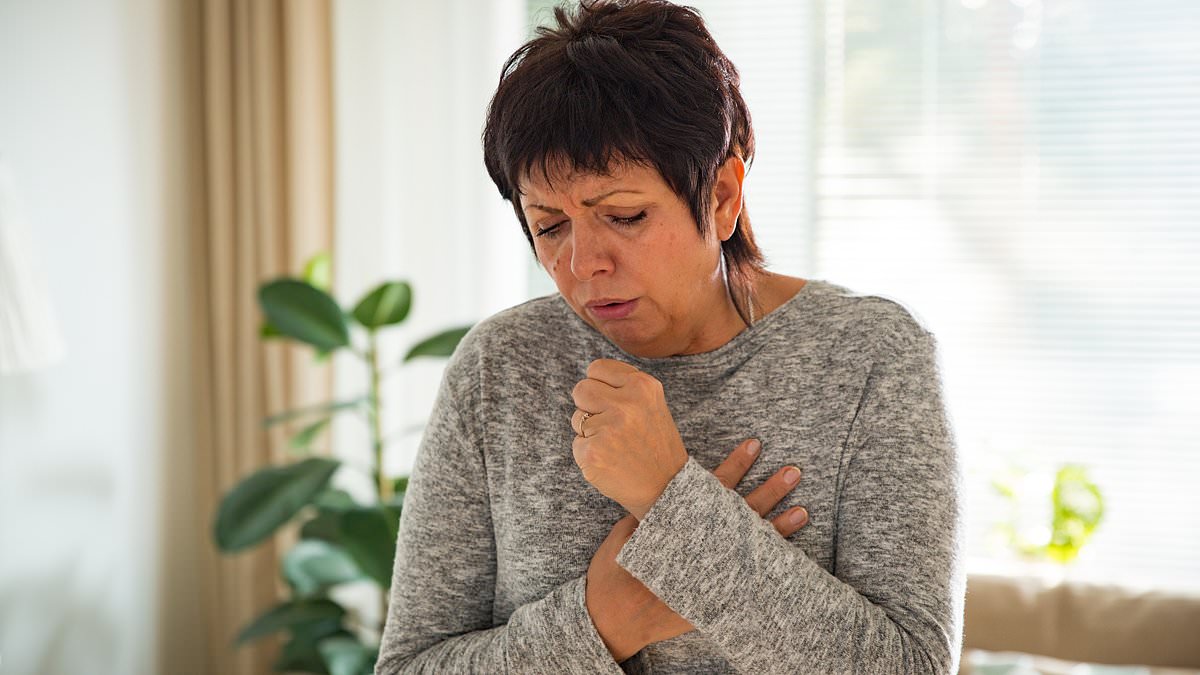A woman with a deadly lung disease is thought to have caught a ‘second-hand’ lung condition from her father decades prior.
The 80-year-old woman with chronic obstructive pulmonary disease (COPD) was experiencing an exacerbation of the condition and struggling to breath. She was admitted to the hospital, where doctors found clumps of plaque strewn across her lungs, which was making it difficult to suck air in.
Due to her family history, doctors suspected something unusual had occurred and were proven right after learning more about the woman’s childhood.
The woman told her doctors that as a child, she and her sisters would play with their father, who worked installing thermal insulation.
When he returned home from work, his clothing would be covered in ‘snow-like’ particles, which turned out to be asbestos.
Doctors believe her secondhand exposure as a child to asbestos, which weakens lung tissue, led her to develop pleural plaques – thickened areas of tissue on the lining of the lungs.
The medical team also found lung damage in the woman’s two sisters, which they say corroborated their theory.
While pleural plaques can’t spread from person to person, exposure to asbestos, even decades in the past, could increase the risk of developing them. However, it’s unclear how common this is.


The above scans show the patient’s lungs 20 years ago (left) and present day (right). In the present-day scan, pleural plaques can be seen in the lungs
COPD affects just over one in 15 US adults, equating to more than 14million people, according to the CDC.
Smoking is the number one cause, as the chemicals in tobacco smoke damage the lining of the airways.
The woman in the case report, from West Virginia, smoked up to 40 cigarettes every day for 20 years.
Read More
Are YOU battling a never-ending cough? It could be hidden lung disease, study shows

However, asbestos fibers can also increase the risk, as these fibers lodge in the lungs and result in inflammation and scarring.
These toxic chemicals are also one of the top causes of pleural plaques.
These plaques are thickened areas of tissue that develop on the lining of the lungs, which can cause shortness of breath and chest pain.
Though asbestos was used in home roofing and insulation for decades, the Environmental Protection Agency (EPA) banned it from most products in 1989 due to its links to lung diseases and cancer.
But even now, the EPA links asbestos to 40,000 deaths per year from lung, ovarian, and throat cancers, mainly in older Americans who were previously exposed to the chemical for long periods of time.
And it wasn't until earlier this year that chrysotile asbestos, the last form of the chemical used in the US, was finally banned.
Writing in the New England Journal of Medicine, doctors at West Virginia University Health Sciences Center compared x-ray images of the woman's lungs from 20 years ago to present day.
The researchers compared scans from the woman's two sisters, as well, which also showed pleural plaques that had worsened from 20 years prior to present day.


The above images are scans from the patient's two sisters. They both developed pleural plaques, which could have been from exposure to asbestos as children

COPD causes progressive damage to the airways, leading to a constant cough and trouble breathing (stock image)
The team noted the women had developed calcified pleural plaques, which form when calcium salts build up in lung tissue due to inflammation.
It's unclear if the woman's sisters smoked or had COPD, but asbestos exposure is the most common cause of these types of lung plaques.
A 2020 study stated up to eight percent of the US population may have pleural plaques, but up to 60 percent of workers exposed to asbestos may develop plaques.
And oftentimes, pleural plaques take decades to form after asbestos exposure.
Signs of these plaques include trouble breathing, chronic coughing, chest pain and coughing up blood, but often no symptoms occur.
A CT scan is used to diagnose the condition and doctors don't typically recommend treatment for plaques because removing them can damage the lungs and they don't commonly cause serious complications.
In rare cases, pleural plaques may increase the risk of other diseases, including lung cancer and mesothelioma.
In the 80-year-old's case, she was able to be discharged home after receiving treatment for her COPD exacerbation, which usually includes oxygen to help breathing, antibiotics for any infections, and steroids to reduce lung inflammation.
